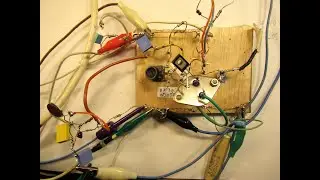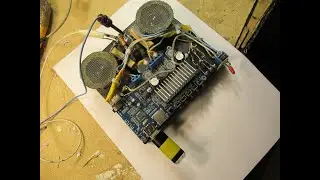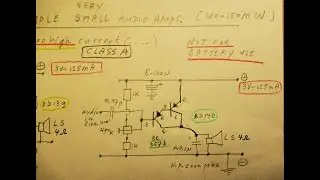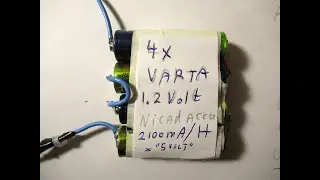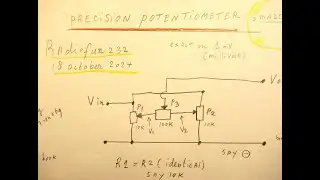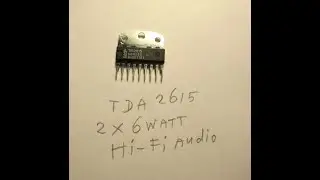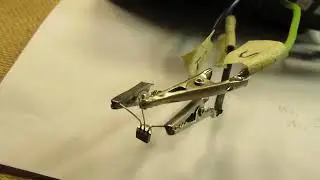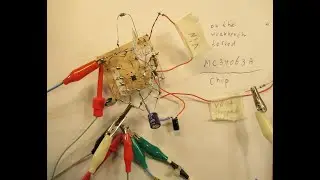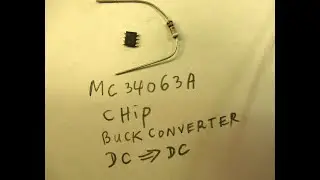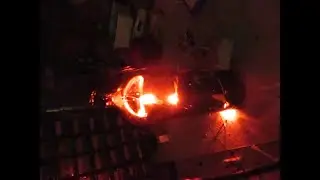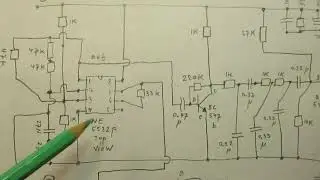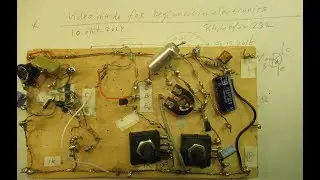TPA3116 Chip tested: 2x50 W audio, USB and Card audio in, LS out, line out, bluetoo & remote control
Please read the description first for more information & the best explanations. I bought this board with the TPA3116 Chip via “Tinytronics” in the Netherlands. They have a very good website, with many modern electronic components.
Music played here is copyright free from YouTube: "Secret Conversations" & "Water Lily".
I show a test of this TPA3116 Chip. And the board, with all the functionalities inside: FM radio, USB input, card sound input, Bluetooth, LS out, Line level audio out, Line level audio in, perhaps even (say) 50 Watt LS out, etc. Even with a good working remote control.
This is the link to "Tinytronics" in the Netherlands. By the way: I am not (!) payed for publishing this link and I also don't want that. So I hope that Google/Youtube will be OK with this, when I publish
this link https://www.tinytronics.nl/nl
You can (also) go to the www. For more information about this chip, I think.
Or to the “Tinytronics” website in the Netherlands. I did not go to the www. to get more info about this chip, knowing enough about how such a chip can work or works, (or not) but, anyway, you can do your own research.
My experiences about this Chip are very OK, though with some important remarks, showed now/here:
1. Can we really get to 2 x 50 Watt audio out into a powerful loudspeaker box? Could be, not tested here. In further test I burned my finger at the 10 Ohm/10 Watt resistor when lifting the line level out to its max..thus...
2. As far as I could see: the power outputs of the audio amps to the loudspeakers Left/Right (both Class D amplifiers, say digital amplification of analog audio signals) are not connected to the (-) minus (ground). It is a so called "totempole" setup, I have learnt that in a (later, 4 nov. 2024) discussion with someone well educated in the academic the field of electronics....
3. Thus (also) don’t try that, perhaps this beautiful board with all its high-tech functionalities will be damaged and no longer useful.
3. Proper working voltage is 18 Volt at (say) 1 Ampère. With a 12 Volt source that cannot deliver enough current, the board wit start to “stutter”. Thus switching on/off in an irregular way, though it seems to work for a short time, but after that it switches off again, stutters again, etc. I think: safety measures programmed in (?).
4. The mass/minus/ground to the “audio out” (= line level, say 0.8 V to 1 V, AC audio, normally used in consumer electronics) must be connected not (!) to the say “overall” mass of the board, but to the pin that is/was made for that. Very important (not handy): the line-out level works together with the speaker out ! When you want to use it as only a MP3 player there must always be a load at the speaker output. And that load gets very hot when lifting the line level up....
5. The diode 1N5408 in the power lead (say 18 Volt at 1 Amp) protects the circuit from accidentally not connecting the (+) and the (-) in the proper way. It will block the current to the board in that case.
6. The 100 uF (35 Volt) electrolytic capacitor in the power lead, between (+) and (-) stabilizes the board, somewhat, when operated on unstable or not well smoothed out DC power lines. You can use a higher value, up to (say) 4700 uF/35 Volt.
My You Tube channel trailer is here: • Radiofun232 on YouTube. Updated month...
I cannot immerse that link directly, because I am shadow banned by Google/Youtube, they don't want you to visit my Channel Trailer because of my critical remarks on the CVD "jabs", the EU policies, etc.
Type there the keywords that you like (e.g. radio/audio/amplifiers/test/filter/) in the “looking glass” = search function” and give “enter”. Via that you can find specific video’s (under the say 1500 published).
When you search, search always “NEWEST FIRST” to get the right overview.
You can also search via the “looking glass” on my Channel trailer via keywords like ”audio”, “radio”, “amplifier”, “filter”, “Shortwave”, “transistor”, “FET”, “oscillator”, “generator”, “switch”, “schmitt trigger” etc; so the electronic subject you are interested in.
My books about electronics & analog radio technology are available via the website of "LULU”, search for author “Ko Tilman” there. https://www.lulu.com/search?adult_aud...
DIRECThttps://www.lulu.com/search?adult_aud...
I keep all my YT videos constant actual, so the original video’s with the most recent information are always on YouTube. Search there, and avoid my circuits that are republished, re-arranged, re-edited on other websites, giving not probable re-wiring, etc.
IMPORTANT: tested it further & found, afterwards, noise on the output line signal (...). Thus soldered cap. of 4N7 or 10N parallel to the output of the "audio out", between the Right and the Left Channel to ground. To damp the HF noise of the Class D amplifier. 31 Okt 2024 & update 5 nov. 2024.







![Undertale Comics MIX RUS DUB [Determination Pie] - ПОДРОСТКИ](https://images.videosashka.com/watch/DMGw6R07mfI)
